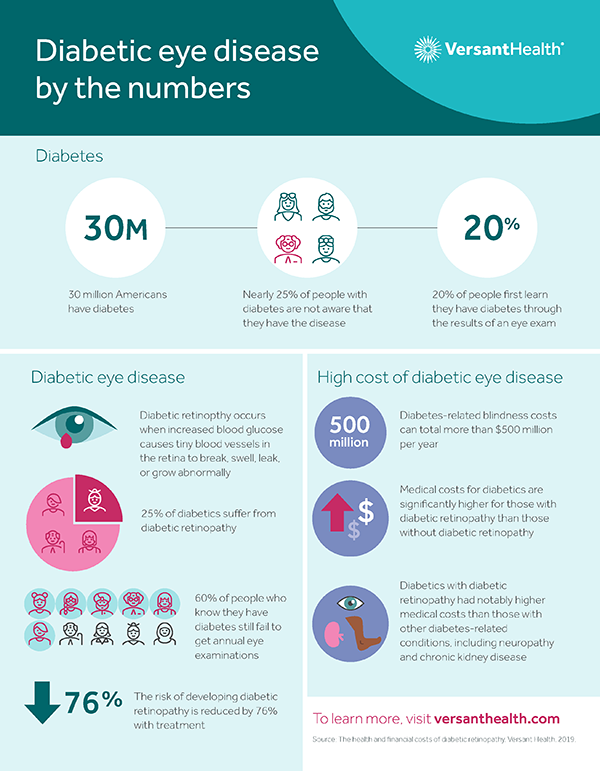Diabetic Eye Disease
[et_pb_section fb_built=”1″ _builder_version=”3.22″ custom_padding=”0px|||||” locked=”off”][et_pb_row _builder_version=”3.25″ background_size=”initial” background_position=”top_left” background_repeat=”repeat” custom_padding=”0px|||||”][et_pb_column type=”4_4″ _builder_version=”3.25″ custom_padding=”|||” custom_padding__hover=”|||”][et_pb_text admin_label=”Text” _builder_version=”4.7.4″ background_size=”initial” background_position=”top_left” background_repeat=”repeat”]
Regular eyes exams can help detect serious health issues. For example, prediabetes is when a person’s blood glucose levels are higher than normal, but not high enough for a diabetes diagnosis. Blurred vision is one of the first indicators of diabetes, so an eye exam may show you are in a prediabetes state.
Over time, diabetes can cause damage to your eyes and lead to diabetic eye disease. These conditions include diabetic retinopathy, diabetic macular edema, cataracts, and glaucoma. They can lead to eye damage or in more serious cases, blindness.
Diabetic Retinopathy
People who have diabetes or poor blood sugar are at risk for a condition called diabetic retinopathy. Diabetic retinopathy occurs when increased blood glucose causes tiny blood vessels in the retina to break, swell, leak, or grow abnormally. If the disease gets worse, some blood vessels close off, which causes new blood vessels to grow, or proliferate, on the surface of the retina. This can lead to serious vision problems.
Diabetic Macular Edema
The part of your retina that you need for reading, driving, and seeing faces is called the macula. Diabetes can lead to swelling in the macula, which is called diabetic macular edema. Over time, this disease can destroy the sharp vision in this part of the eye, leading to partial vision loss or blindness. Macular edema usually develops in people who already have other signs of diabetic retinopathy.
Glaucoma
Glaucoma is a group of eye diseases that damages the optic nerve by a build-up of fluid in the front part of the eye. Diabetes doubles the chances of having glaucoma, which can lead to vision loss and blindness if not treated early. According to Mayo Clinic, Glaucoma is one of the leading causes of blindness for people over the age of 60.
Cataracts
The lenses within our eyes are clear structures that help provide sharp vision—but they tend to become cloudy as we age. Also, if your blood sugar levels change quickly, it can affect the shape of your eye’s lens, causing blurry vision. Researchers believe that excess blood sugar from diabetes can cause cataracts. People with diabetes can develop cataracts at an earlier age than people without diabetes.
If you are enrolled in the vision plan, one comprehensive eye exam every year is covered at 100%, after a $10 copay. If there is a problem with your blood sugar, sometimes your eye doctor is the first person to detect an issue. It’s especially crucial for people with diabetes to get their eyes examined regularly, as they can develop more serious conditions without realizing the symptoms.
Check out the infographic below to learn more about diabetic eye disease.

[/et_pb_text][et_pb_post_nav _builder_version=”4.4.8″][/et_pb_post_nav][/et_pb_column][/et_pb_row][/et_pb_section]
